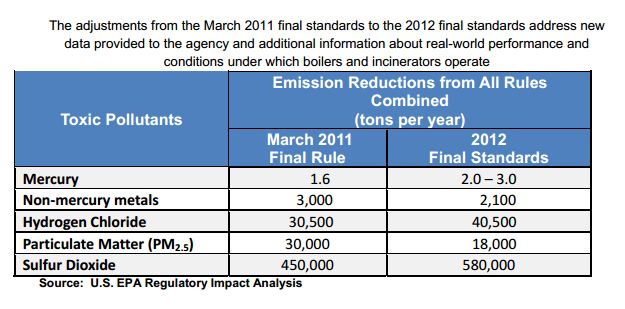The Clean Air Act continues to be debated as the EPA comes closer to the April 13th deadline to finalize new source performances standard (NSPS) regulations. According to a Power Engineering Article from March 15, the Obama administration is considering more changes to the rule regulating greenhouse gasses.
The rule established in March of last year would require all new coal-fired power plants to emit no more than 1,000 pounds of carbon dioxide per MW/h of electricity produced. Existing coal-fired power plants had no such restrictions.
Concerns about the probability that new plants would be able to meet that rule were raised by four Democratic senators, who sent a letter to Obama urging him to amend the standard.
According to the letter, the senators worry that having the same emission standard for both gas-fired and coal-fired will actually hinder goals to reduce emissions in the United States. Not only are they concerned that new plants won’t be built, they also state that current coal-fired plants may choose not to upgrade their plant with cleaner systems because they will not be able to meet the regulations.
The letter then states that it is possible to continue to build new coal-fired plants – with state of the art technologies – and reduce admissions. Continued advancement of technology will help the industry grow cleaner throughout the years.
The concerns of the senators are clear in their letter. If those who are currently planning to build coal-firing plants are prevented due to inability to comply with the law, the jobs that may have been created will be lost and the cost of electricity has the potential to grow. In addition, these four senators are worried that such restrictions will prevent the further creation of technologies that will reduce emissions even farther.
Synergy Systems celebrates the creation of new technologies that further reduce emissions as they also tend to save businesses money and create a more efficient plant. The aim of our Energy Patriot program is to recognize the achievements of those plants and businesses that make great strides in working towards American energy independence.
Goals such as energy independence and dramatic reductions in emissions cannot be met overnight. Fine tuning of current technologies and the freedom to invent new state-of-the-art systems is an absolute necessity to achieving those goals. Synergy is proud to be a part of a movement toward a cleaner society, with systems that are optimized to create the greatest amount of product or energy while at the same time reducing the amount of fuel and emissions used.
If you are curious about what our engineers can do to save you money through optimized systems, drop us a comment here or visit our Contact Us page and speak to our experts today.

